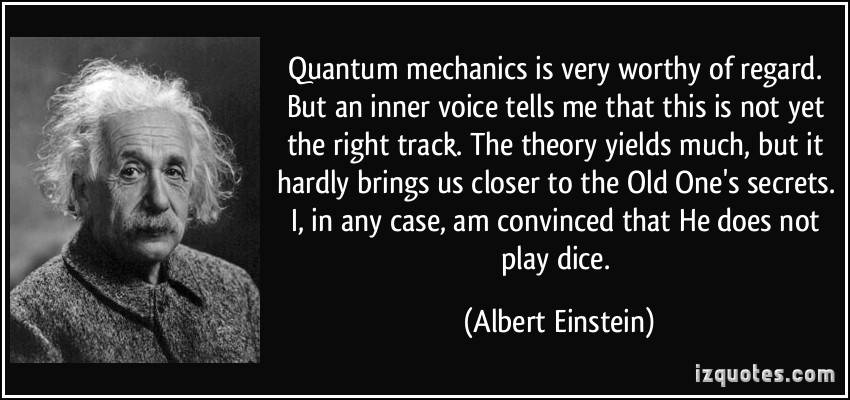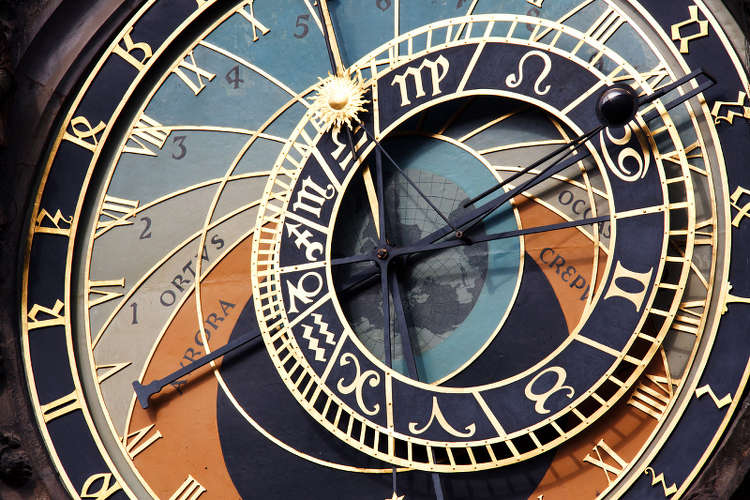By Doug Marman
Quantum mechanics has proven itself to be the most accurate scientific theory ever known. Plus, some 30% of the US gross national product is based on quantum mechanical inventions. They’re used in everything from computer chips and lasers to CD players and magnetic resonance imaging machines in hospitals.
However, the theory has yet to make its way into the understanding of the general public. As a result, the scientific revolution of quantum mechanics is unfinished.
Yes, we’ve all heard the term ‘quantum.’ But few understand the science and what it means, even in a simplified way. Scientists aren’t any better off. They know how to use the equations, but they don’t understand what it means either.
Since the modern age of science began, this has never happened before.
Isaac Newton published his book that explained gravity and the laws of motion in 1687. People struggled with the idea at first, that a force could reach across space from the sun and pull the Earth. However, after a couple generations, the idea was accepted by almost everyone. People could picture the universe as a giant clockwork, driven by cause and effect.
Michael Faraday and James Clerk Maxwell launched the electromagnetic revolution in the mid 1800’s. Within fifty years, electrical inventions were springing up everywhere. The term “force field” became widely used and most people intuitively understood what it meant.
Einstein’s principle of relativity also created problems at first. How can the speed of light look the same when speeding toward a beam of light or away from it? How can the measurement of time be relative to our reference frame?
It’s still a challenge for most people to fathom why the world is this way. However, the underlying principle is simple enough: Everyone’s experience is relative. There is no perspective that is truer than any other.
It takes time for major breakthroughs to filter into the understanding of the public. When they do, they literally change the way we perceive the world. In other words, they give us a new lens—a new way of seeing.
But now, for the first time in history, a revolutionary scientific discovery has failed to reach a general understanding. A hundred years after quantum theory was discovered, it still doesn’t make sense, not even to physicists.
This creates a problem. An intuitive understanding isn’t a part of our social wisdom, but something else has filled the void. It happened unintentionally. The void has been filled with a conclusion that many scientists have reached: Life doesn’t make sense. There is no meaning to quantum uncertainty; that’s just the way it is.
This idea is creating a wedge between science and other fields, such as philosophy and religion, because many people don’t accept it. Einstein hit the nail on the head when he said, “God doesn’t play dice with the universe.” In other words, the world isn’t just a bunch of random pointless events. It means something.

Einstein, in a letter to Max Born, 4 December 1926. Often quoted as “God does not play dice with the universe.”
As a result, there’s been a change in the public’s perception of science. Scientists have noticed the shift in attitude. Some believe that this is a sign that our society is sliding backwards towards superstitious thinking, but I don’t think that’s the case. Most of those claiming that something is missing from science are highly educated.
I think a big underlying cause of this growing rift is that we don’t yet understand one of the biggest breakthroughs in science. A deeper understanding of quantum mechanics can heal this problem.
It’s important to realize that this idea—that life is just ‘probabilistic’ and ‘unpredictable’ at the level of fundamental particles, and the best we can do is accept it—is a false conclusion. Physicists haven’t learned this scientifically. They simply don’t know how else to interpret the data.
In other words, this isn’t a lesson of quantum mechanics. It’s simply a sign that physicists don’t know what it means. It isn’t a conclusion. It’s a reminder that the quantum revolution is incomplete.
I say this because it is now clear to me, after I found a way to explain the quantum mystery. I didn’t expect to uncover a simple intuitive explanation. It was an accident. But looking back, it’s now easy to see the huge void, like a dark cloud, that has kept the real lesson of quantum mechanics from our doorstep.
Quantum theory now makes sense to me, and I think that it is simple enough that most people can understand. More importantly, the underlying principles don’t just apply to the subatomic world. They play a vital role in our everyday lives. That was the biggest surprise for me.
My wife, Karen, was my first litmus test. She never studied physics in college. She doesn’t read science books. She didn’t know anything about quantum mechanics. But after reading chapter 13, “The Spooky World of Quantum Physics” in my book, Lenses of Perception, she shocked me and said, “That was fun.” She actually enjoyed reading it.
She even asked me to get her a T-shirt that says, “I sorta understand quantum mechanics.”
Of course, she realized that a lot of the science was over her head. She could see that, but it still intuitively made sense to her.
This might seem like a small thing, but it is something that leading physicists say is impossible: They claim that no one understands it.
More importantly, Karen began seeing the principles everywhere. The world now makes more sense and is easier to understand.
For example, we experience unpredictable effects in our lives everyday, because we never know for sure how others, or even how we, will act in a situation we’ve never faced before. These are true quantum effects. They are an important part of life, because they show us that life isn’t completely driven by outside forces. It also emerges from within.
Karen’s reaction isn’t unique. Another person recently wrote to tell me that he was watching a show on the history channel about Thomas Jefferson, when he suddenly realized it was a perfect example of the scientific lens influencing Jefferson’s perceptions.
Another person told me that she was reading a book on spirituality that she had read many times before, but now she understands it more deeply because she can see how lenses of perception are involved.
Finding a deeper understanding of life—that is the part of the quantum revolution that we’ve been missing.
We’ve been told that quantum shenanigans only exist in the subatomic world. If this were true, then most people could easily ignore it, since it has little to do with their daily lives. However, it turns out that quantum theory is more important to people’s personal lives than any of the other great scientific discoveries.
Why? Because once we see how to understand it, it clarifies so much of what makes life mysterious. This doesn’t mean it ends the mystery in the way that objective analysis often does. On the contrary, it heightens the enigma and pulls us in.
Here’s an example: We connect with other people through our work, communities, friendships and families. Relationships expand the horizons of our individual lives. These bonds change us and give meaning to our existence. But none of this can be understood with a third-person lens, because it exists between people. It can’t be seen by outside observers. We have to experience it.
This is exactly what it means to be entangled. And this is exactly what quantum entanglement—perhaps the greatest mystery of quantum mechanics—is about. Relationships are real, but they only exist in between. They don’t belong to one person or another, they’re a connection between them.
When two particles become entangled, they are tied together in an invisible way. When something affects one, it affects the other as well. We experience the same thing. When a friend suffers or has a success, it affects us as well.
This isn’t just a similarity. These are examples of true quantum entanglement.
Once we find the right lens, we can see that our lives are woven into the universe.
Think of how this understanding would change your perception of science if this was a recognized lesson of quantum mechanics. Doesn’t it build a bridge between science and philosophy and religion?
It’s been more than a century since the revolution started. I’d say it is high time for quantum behavior to finally make sense, and for our culture to absorb the meaning of this great breakthrough.



Once a person’s mind becomes formatted to interpret everything according to modern conventional science, it becomes difficult to understand that another unseen force is at play in the universe. This must be Doug’s challenge then. To bring his evidence of the unseen before our scientific communities so that they too may come to a more practical understanding.
Tim,
Yes, this is the challenge. Once we have formed a lens through which we look at the world, it is hard to set aside our way of seeing to find another lens. The interesting thing about science, however, is that this is exactly what nature forces scientists to do, when they run into areas where they can see that they are missing something important, but they just can’t see what it is yet.
This appears to be exactly what quantum mechanics is telling us with its apparent paradoxes: We are missing something that is right before our eyes. Most scientists try to solve the problem, if they try at all, with new mathematical approaches. I am suggesting that new lenses of perception might be the answer.
The evidence is there, but it is a big challenge to wrap our heads around seeing the world through a new lens.
Thanks for your comments.
Doug.